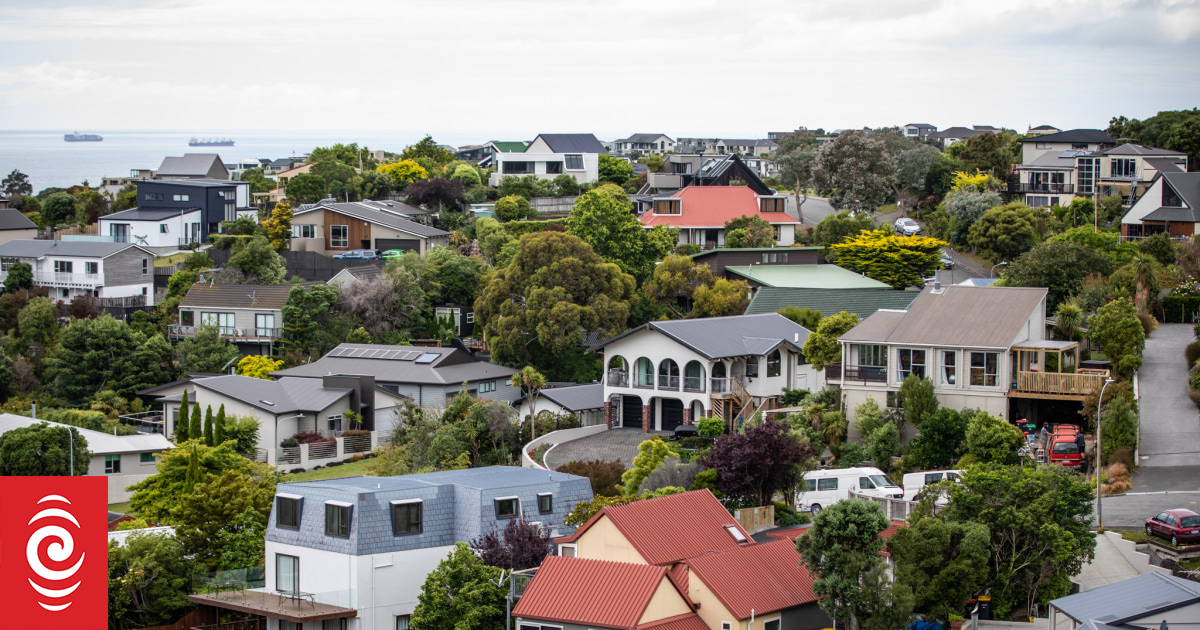Sales activity has picked up but house values have remained flat or slightly down.
Photo: RNZ / Nate McKinnon
New Zealand’s housing market has had a patchy year.
Sales activity has picked up but house values have remained flat or slightly down.
But with interest rates falling, there are forecasts of bigger price rises.
So what’s really going on?
Here are the factors in the latest Real Estate Institute data.
Turnover – up (mostly)
The institute’s data shows that there were 6346 sales across New Zealand in September, up 3.1 percent year-on-year.
If Auckland was taken out of the equation, that increase lifted to 7.5 percent.
In the West Coast, sales were up 56 percent. Marlborough was up 37.1 percent and Nelson up 32 percent.
Month-on-month there was a drop in activity if it was adjusted for seasonal trends. But the national median says to sell fell by six compared to 2024, to 43.
Prices – mixed
The median Real Estate Institute price dropped 12.5 percent year-on-year to $770,000. Auckland’s median price was up 0.8 percent on the year before to $978,000.
Two regions had record prices: The West Coast was up 14.6 percent compared to 2024 top $447,000 and Southland was up 7.8 percent to $525,000.
Chief executive Lizzy Ryley said it was the first time in more than three years that two regions recorded record median prices in one month.
The house price index, which is designed to smooth out movement in median prices caused by the makeup of sales, was up 0.8 percent over the month and 0.2 percent over the year.
But ANZ economists pointed out that when it was seasonally adjusted, there had been little movement over the year.
On a non-adjusted basis Auckland was up 1.1 percent in a month and down 1 percent over the year. Within Auckland, there was some patchiness with prices still falling for the month in Rodney and Papakura.
Ryley said Auckland’s prices were best described as stable.
Whangarei was up 4.3 percent in the month, and 0.9 percent in the year. Hamilton was down 0.3 percent in the month but up 1 percent in the year. Tauranga was up 0.6 percent in the month and up 3 percent in the year.
Wellington was down 0.7 percent for September and down 2.6 percent in the year. Porirua was reporting particular price weakness.
Christchurch was up 1.1 percent for the month and 3.9 percent over a year.
Queenstown was up 2.5 percent for September and 5.1 percent compared to 2024.
ANZ economists said they expected house prices to stay broadly flat through the remainder of 2025 as weak near-term momentum, elevated inventories and a soft jobs market offset the impact of lower interest rates.
“However, we expect a gradual recovery in both the economy and housing market, with house prices rising around 5 percent over 2026, supported by the OCR reaching 2.25 percent by the end of the year.”
Westpac economists agreed the market was generally stable, albeit with some regional differences.
They said the 50 basis point cut in the official cash rate this month had given more momentum to interest rate falls.
“Against this, the housing market remains adequately supplied due to reasonable levels of construction activity and the slow pace of population growth. As a result, we expect only a modest lift in prices over the next few months, picking up to a 5 percent rise over 2026 on the back of an improving economy, higher net migration and a reduction in the backlog of unsold homes.”
Listings
More properties came on to the market, giving buyers more options to choose from. The institute said there were 9394 in the month, up 1.3 percent compared to 2024. The number of places available for sale reached 30,721, a 2.3 percent increase on the year before.
Mood
Ryley said the mood was positive in the market.
“Some local salespeople are reporting a noticeable lift in activity across the market, with first-home buyers and owner-occupiers still the most active participants,” she said. “With the recent OCR drop of 50 basis points likely to influence further interest rate reductions, combined with the usual spring rush, salespeople are cautiously optimistic that activity will strengthen further through spring and into summer.”
But she said buyers were still taking their time.
“People want to move, they want to buy, particularly new home buyers. But there’s caution in areas where prices are higher. Now they’re more stable, which I think is a good thing for consumers… you’re not in a position where you’re thinking ‘do I have to buy right now’ because there’s an upward trajectory.”
ASB’s recent house price surveys showed many people think it is a good time to buy a house.

